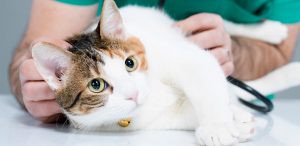
Know What to Expect
When it comes to recognizing the signs and symptoms of illnesses in cats, cat owners are faced with a difficult and challenging task. Cats are resilient and tend to hide their weaknesses. Therefore they usually show no signs of distress until it is too late. Being well-informed and observing your cat carefully is the best way to spot any alarming changes in their well-being.
Respecting vaccination protocols and regular check-ups also help keep your cat healthy. To make things easier, we have compiled a list of the top 10 cat diseases.
Feline Immunodeficiency Virus (FIV)
The Feline Immunodeficiency Virus (FIV) is a virus similar to HIV in humans. It attacks the immune system, rendering the cat more susceptible to a range of other illnesses and secondary infections. The virus transmits through deep bite wounds. FIV infected cats may not show symptoms for years. Once the symptoms become apparent, they include:
- Fever
- Sneezing
- Eye and nose discharge
- Dental issues
- Swollen lymph nodes
- Delayed wound healing
- Poor coat quality
- Hair loss
FIV cannot be cured, but it can be controlled. If kept in a stress-free, indoor environment and given proper supportive medical care, infected cats can live comfortably for years before the disease reaches its chronic stage.
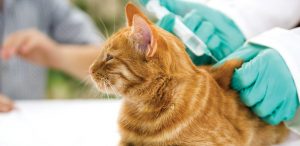
Feline Distemper or Panleukopenia (FPV)
Feline distemper or panleukopenia is a virus that attacks the cat’s blood cells in the bone marrow and intestinal tract. It is a highly contagious and life-threatening condition. The virus is transmitted through excreted body fluids (blood, feces, urine) and via fleas. Infected queens pass the virus to kittens through the placenta or milk. The disease manifests with:
- High fever
- Depression
- Vomiting
- Diarrhea (with blood)
- Dehydration
- Malnutrition
- Anemia
- Lack of coordination
- Rough hair coat
Infected cats require an aggressive approach. Since there is no existing cure for the virus, the treatment includes supportive therapy. Unfortunately, the chances of surviving the disease are extremely low. Scheduled vaccination is the best prevention.
[caption id="attachment_2202" align="alignnone" width="300"]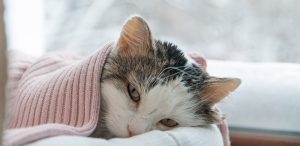 There is a vaccine that can be used to prevent the infection.[/caption]
There is a vaccine that can be used to prevent the infection.[/caption]
Feline Leukemia (FeLV)
Feline leukemia is a viral disease that inhibits the cat’s immune system. Simply stated, the virus weakens the cat’s immune system, predisposing the cat to a variety of infections and diseases such as kidney disorders, anemia and lymphosarcoma.
Young kittens are at higher risk of becoming infected. Some affected cats may not show any symptoms, while others may experience symptoms like:
- Loss of appetite
- Weight loss
- Diarrhea
- Vomiting
- Fever
- Enlarged lymph nodes
- Seizures
- Respiratory problems
- Vision and eye problems
- Jaundice
- Lethargy
Sadly, there is no treatment for feline leukemia. It is estimated that less than 20% of infected cats live more than three years after the diagnosis. However, there is a vaccine that can be used to prevent the infection.

Diabetes
Diabetes is one of the most serious and complex health concerns in cats. It is caused by either a lack of the hormone insulin (diabetes type 1) or inadequate response to insulin (diabetes type 2). Obese cats are at higher risk of developing diabetes. Symptoms of diabetes include:
- Changes in appetite (increased or decreased)
- Increased water intake
- Weight loss
- Frequent urination
- Sweet-smelling breath
- Lethargy
- Dehydration
- Unkempt hair coat
- Urinary tract infections
Diabetes cannot be cured. It can only be controlled via daily monitoring and regular insulin shots. However, every diabetic cat needs individually tailored treatment and every cat responds differently to the therapy. Critical cats require hospitalization until stabilized.
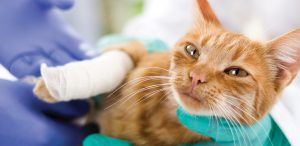
High-Rise Syndrome
High-rise syndrome is a name used to describe the phenomenon of cats falling from significant heights (7-9m) as well as the injuries sustained due to the fall. Contrary to popular belief, cats do not jump on purpose. Common causes of falling include:
- Being startled
- Strong prey drive
- Involuntary REM movements during sleep.
High-rise syndrome usually manifests with:
- Fractured jaw, limbs, pelvis
- Visible wounds
- Bleeding or swelling of the mouth
- Blood loss
- Painful abdomen
- Enlarged abdomen
The biggest issue with this syndrome is that the onset of clinical signs may be delayed. Therefore all cats that suffer falling from high altitudes need to be brought to a veterinarian for a full assessment. Fortunately, with immediate and proper medical attention, the survival rate for cats who are high-rise victims is 90%. Additionally, high-rise syndrome is 100% preventable.
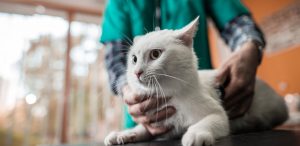
Ringworm
Ringworm is a type of skin infection caused by a group of fungi (microsporum canis, microsporum gypseum and trichophyton mentagrophytes) capable of growing on the skin, while using the skin’s superficial layers, hairs and nails as a food source. The name of the condition is quite misleading since it has nothing to do with worms. The most common symptoms of feline ringworm are:
- Patchy or circular hair loss
- Poor coat quality
- Irritated and red skin or darkened skin
- Itchiness
The biggest problem with feline ringworm is that most of the infected cats can be asymptomatic, which means that despite being infected, they do not show any signs of illness. However, they serve as sources that spread and transmit the disease to other cats and dogs.
The simplest treatment options involve using topical antifungal creams and shampoos. Severe cases, with generalized lesions, require oral antifungals too.
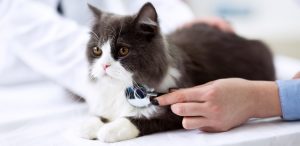
Intestinal Worms
Cats are susceptible to a plethora of intestinal parasites or worms, such as:
- Roundworms or ascarids (toxocara cati & toxocara leonina)
- Tapeworms (taenia spp. & dipylidium caninum)
- Hookworms (ancylostoma spp. & uncinaria spp.)
- Whipworms (trichuris spp.)
The most common way worms are transmitted is by ingesting feces of infected felines. Young kittens usually get worms from their mothers. When the cat gets worms, the infestation initially affects the digestive system, causing:
- Vomiting
- Diarrhea
- Appetite loss
- Enlarged tummies
- Dull coats
- Pale gums
- Blood in the vomit and stool
If left untreated, the worms can have devastating effects on the cat’s overall health and lead to:
- Anemia
- Intestinal blockage
- Prolapsed of the rectum
Regular use of cat dewormer products is the right path for raising a worms-free cat.
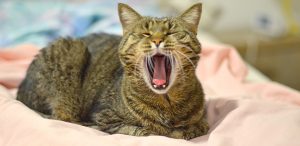
Upper Respiratory Infection
The cat’s upper respiratory tract (nose, throat and sinuses) is susceptible to infections caused by a variety of viruses and some bacteria. Upper respiratory infection in cats is very similar to the human cold. Affected cats show symptoms like:
- Sneezing
- Coughing
- Runny nose
- Squinting or rubbing the eyes
- Eye discharge
- Lack of appetite
- Fever
- Gagging and drooling
- Fast breathing
Despite the fact that respiratory infections can be stubborn, they are relatively easy to treat and control. Usually, the therapy includes medications, isolation, rest, support with fluids and nutritional support.
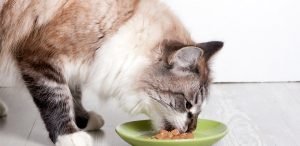
Feline Lower Urinary Tract Disease (FLUTD)
FLUTD is a fatal condition that usually occurs in castrated, male cats. It is a result of excessive crystal formation, which lead to blockage of the urinary passages. FLUTD manifests with:
- Frequent urination or inability to urinate
- Painful urination
- Blood in the urine
If properly approached, the condition can be successfully managed. It should be noted that urethral blockage in cats is considered an emergency. The goals of the therapy are to eliminate the blockage and reduce the pain. The best way to prevent FLUTD is by feeding an adequate diet to castrated males.

Inflammatory Bowel Disease (IBD)
Inflammatory bowel disease is a term used to describe a group of chronic gastrointestinal disorders that result from infiltrating inflammatory cells into the walls of the gastrointestinal tract. IBD is considered a syndrome rather than a disease. Simply stated, IBD occurs as a result of chronic irritation of the stomach or intestines.
Middle-aged and older cats are more commonly affected by this condition. IBD can involve any part of the gastrointestinal tract and manifests with:
- Variable appetite (from voracious eating to anorexia)
- Vomiting
- Weight loss
- Diarrhea
- Lethargy
IBD therapy approach includes:
- Dietary management: low-fat, fiber-rich or hypoallergenic diets
- Medical treatment: anti-inflammatory and immunosuppressive drugs
